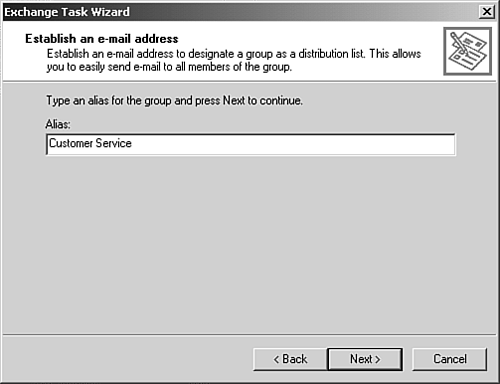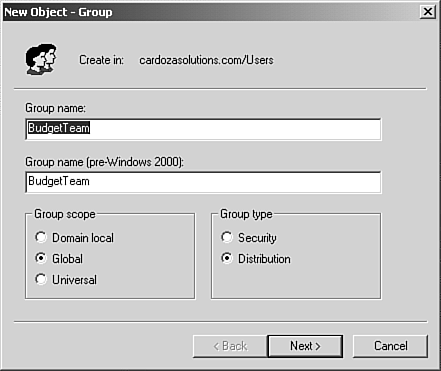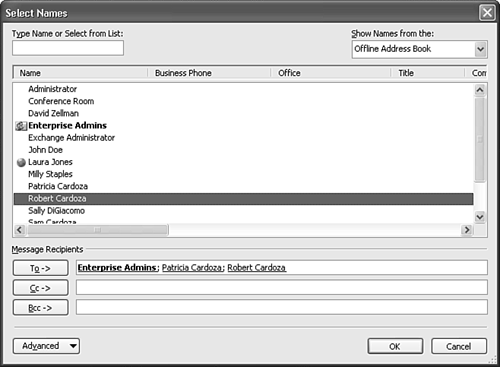Working with Server-Side Distribution Lists
| Using Outlook as a client for Exchange 2000 gives you access to address lists stored in Active Directory. These address lists enable you to send email to any valid user of Exchange 2000. They also give you access to distribution lists created on the Exchange 2000 Server. Your Exchange administrator can create distribution lists on the Exchange 2000 Server in several ways. The easiest way to create an Exchange 2000 distribution list is to assign an email address to a security group or universal group. Your Exchange administrator can create a distribution list for each department, building, or division of the company. For example, in my organization, we have a distribution list for Sales, one for Customer Service, and one for the Shipping Department. These distribution lists enable all users in my Exchange organization to send email to an entire department using only one address. Creating a Server-Side Distribution ListTo assign an email address to a security group, use the following steps:
In addition to assigning an email address to a security group (either global or universal), you can also create a distribution group. A distribution group is created simply by adding individual users to a simple group that isn't used for any security-related tasks. To create a distribution group, use the following steps:
Now that you know how to create distribution lists on the Exchange Server, you can use those lists to send messages in Outlook 2003. Using an Exchange 2000 or Exchange 2003 distribution list is very easy. All you need to do is create a new email message. Click the To button to display Figure 28.4. You can add individual users and distribution groups to your message recipients. After you've added your recipients, you can send your mail as usual. Figure 28.4. You can add individual users and distribution lists to your message recipients.
|
EAN: 2147483647
Pages: 426



